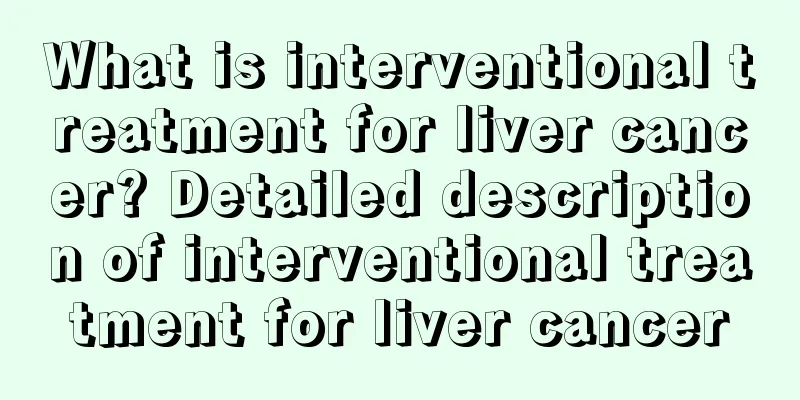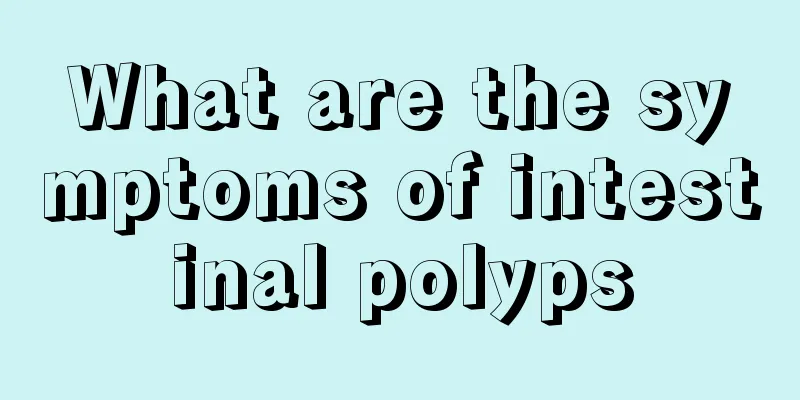What is interventional treatment for liver cancer? Detailed description of interventional treatment for liver cancer

|
What is interventional treatment for liver cancer? Interventional treatment is one of the more effective treatments for early liver cancer. Below we will further answer this question for you. The most commonly used technique for interventional treatment of liver cancer is hepatic arterial chemoembolization, which involves inserting a catheter into the hepatic artery via arterial puncture, and then super-selectively inserting a catheter into the tumor's blood supply artery to inject chemotherapy drugs and iodized oil chemotherapy emulsion, thereby performing local high-concentration chemotherapy on the tumor and embolizing the tumor's nourishing blood vessels, eliminating the tumor's blood supply, and achieving the dual effects of "killing the tumor with drugs + starving it to death," according to the study. For small hepatocellular carcinomas with a diameter of less than 5 cm, microcatheter technology is used to super-selectively cannulate the hepatic segmental or subsegmental arteries, and a large amount of iodized oil chemotherapy drug emulsion is injected under pressure to completely fill the terminal arterioles and venules of the tumor, so as to achieve the purpose of medical hepatic segment resection. If TACE is combined with local radiofrequency ablation or microwave therapy, the therapeutic effect can be similar to that of surgical resection, and it is superior to surgical treatment in terms of safety, recurrence rate, repeatability, complication rate and indications. For advanced liver cancer with large or numerous tumors, TACE is the preferred non-surgical treatment method, which can effectively control the local growth rate of the tumor, significantly relieve clinical symptoms such as abdominal pain, and improve the patient's quality of life. However, a single TACE operation has limited therapeutic effect on liver cancer. Multiple embolizations can achieve the maximum tumor necrosis rate and prolong the patient's survival. The interval between TACE operations is determined according to the tumor's response and the patient's condition, usually 4-12 weeks. |
<<: What is ablation therapy for liver cancer? Analysis of ablation therapy for liver cancer
>>: What are the early symptoms of liver cancer? 5 early symptoms of liver cancer
Recommend
Numbness in hands and feet after exercise
Exercise is something people do frequently in the...
How harmful is brain cancer to the human body?
There are many different types of brain tumors, a...
What is the difference between freckles and dark spots?
Some female friends worry about the spots on thei...
How long does it take to get pregnant after chemotherapy for nasopharyngeal carcinoma
Nasopharyngeal carcinoma refers to a malignant tu...
Pain below waist and above buttocks
Pain below the waist and above the buttocks is ge...
Where do foreign objects go when they are inhaled into the nose?
It is very common to inhale foreign objects into ...
What are the benefits of drinking tangerine peel and Poria cocos soaked in water
Tangerine peel and Poria cocos are two traditiona...
What does the increase of TSH after thyroid cancer surgery mean? Why should patients take Euthyrox after thyroid cancer surgery?
Thyroid cancer surgery is a very common cancer su...
What causes itchy eyeballs? Be careful of these eye diseases
If you often experience itchy eyes, you should be...
Can men drink dandelion water?
Dandelion is a wild plant. Every spring, a large ...
How is rectal cancer diagnosed
In recent years, rectal cancer has become one of ...
Will eating bayberry cause you to get a sore throat?
Bayberry is a fruit produced in Guangxi, Guizhou,...
What are the functions of rice washing water
We all know that after washing rice, there will b...
Colonoscopy shows red blood in the intestine
Everyone should know that intestinal health issue...
7 Mistakes Everyone Makes Every Hour
In fact, each of us is hovering on the edge of he...









